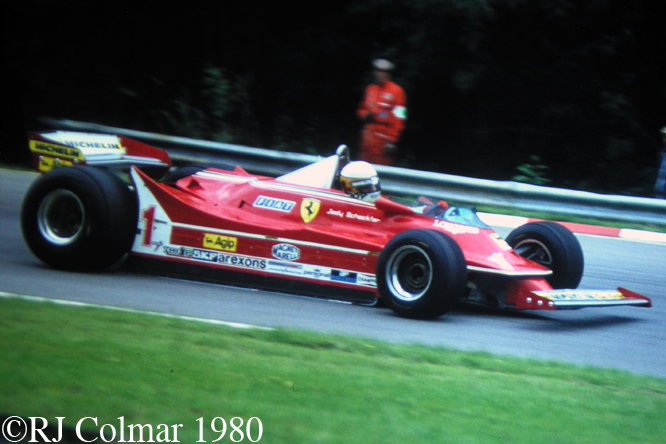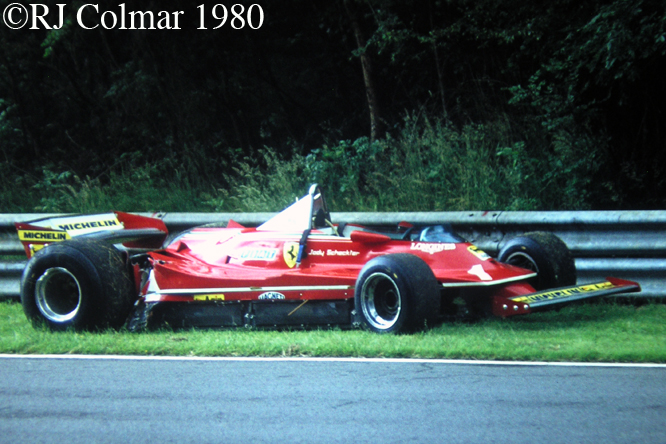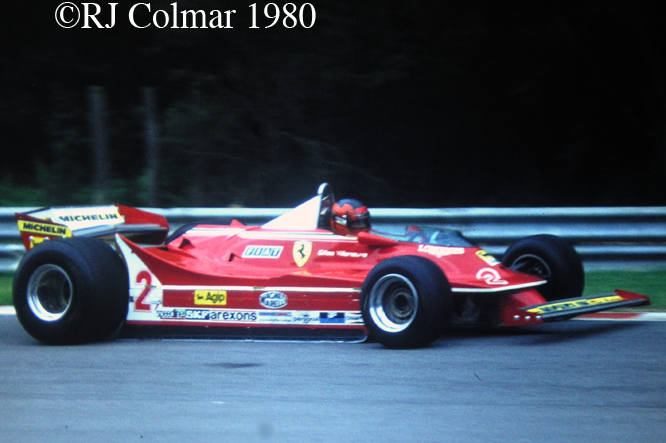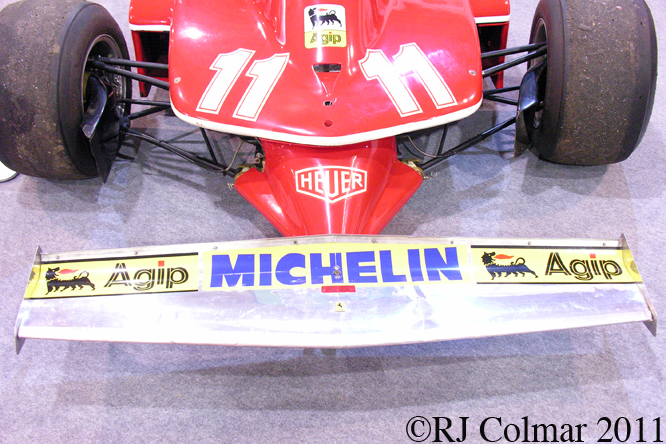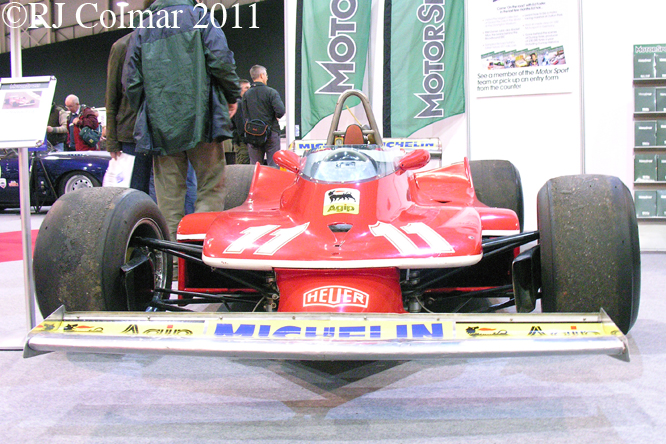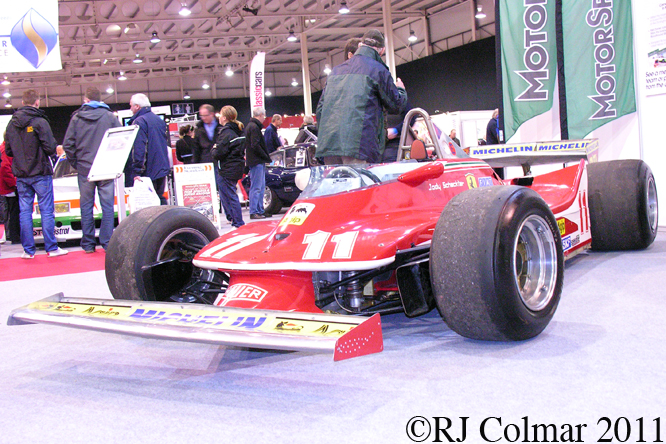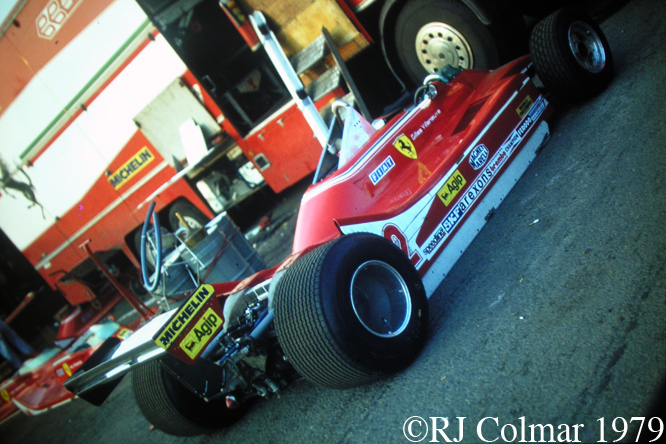In 1970 Jackie Stewart and Ken Tyrrell were convinced that it was better to stick with the Ford Cosworth DFV power and seek a new chassis than move to the Matra powered car of their hitherto chassis supplier Matra. Ken Tyrrell bought a couple of new March chassis to tide the team over until Derek Gardener was ready to introduce the new Tyrrell 001 chassis late in 1970.
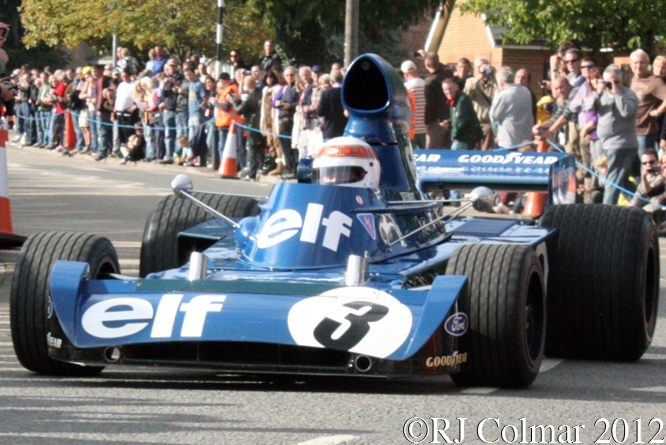
Tyrrell 001 was followed by the similar 002, 003 and 004 chassis in 1971 with Jackie Stewart driving #003 to championship success in 1971. At the 1972 French Grand Prix Gardners all new slab sided Tyrrell #005 was introduced and Jackie Stewart finished the 1972 season with two convincing wins at the season ending Canadian and US Grand Prix, albeit too late to overhaul the advantage built up by Emerson Fittipaldi driving a Lotus Ford 72.
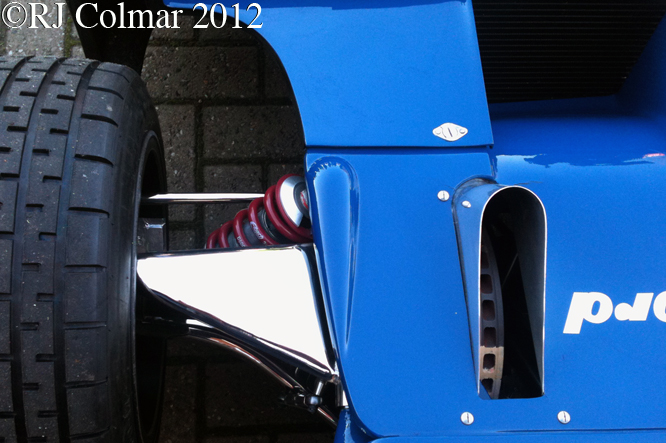
Stewart’s team mate Francois Cevert was given today’s featured car Tyrrell chassis #006 to drive at the two 1972 season ending races he retired with gearbox problems after qualifying 8th in Canada and finished 2nd to team mate Jackie from 4th on the grid in US Grand Prix. Chassis #006 was essentially to the same design as #005.
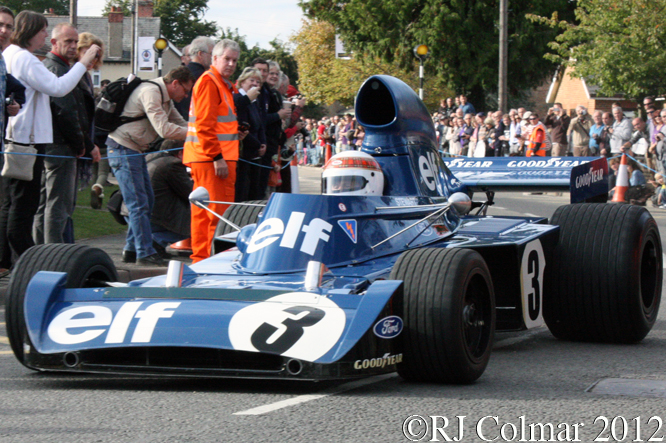
In 1973 Jackie started the season of with #005 scoring a third place finish in Argentina and 2nd place in Brazil with Cevert finishing 2nd in Argentina but only 10th in Brazil in the #006 chassis. At the third race of the 1973 season the South African Grand Prix Jackie crashed #005 on the first day of practice and immediately took over Cevert’s 006 car running with Ceverts name and #4 race number. Note the second link showing Stewart driving the #4 is incorrectly labelled as chassis #005.

#005 was repaired for Cevert to drive in South African Grand Prix, he started 25th and last having failed to set a time and was unclassified at the races end 13 laps behind the leaders, Stewart meanwhile qualified 16th and came through to score the first of five wins in his third and final championship season. Three of those wins would be 1-2 finishes with team mate Francois following closely behind. Note Stewart ran chassis #006 with his #3 race number in the 1973 race and lost a piece of his rear wing end plate as seen in this linked photo.
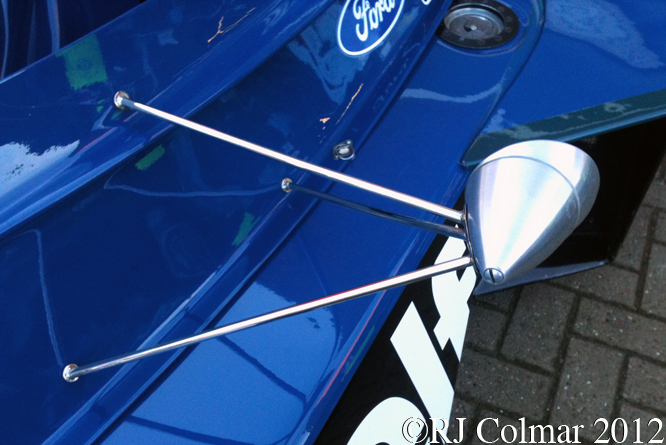
For the 1973 Spanish Grand Prix Stewart was given a new chassis #006/2 to race that, like #006 which reverted to Cevert, had been fitted with the distinctive angular deformable structure on the sides that were required by new regulations that came into force. At this race both Cevert and Stewart ran with the oblong end plates as seen on #006 in today’s blog driven by Sir Jackie at last years BRM Day.
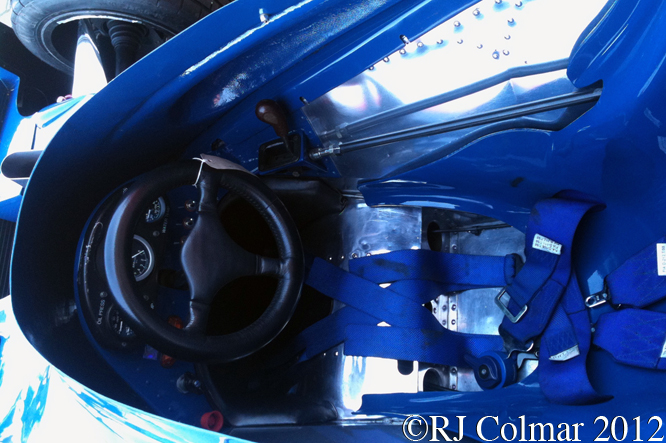
Cevert finished 2nd in the 1973 Spanish Grand Prix as he did in the following Belgian GP where he followed Stewart home in a Tyrrell one-two finish. Still driving #006 Francois finished 2nd at his home French Grand Prix.
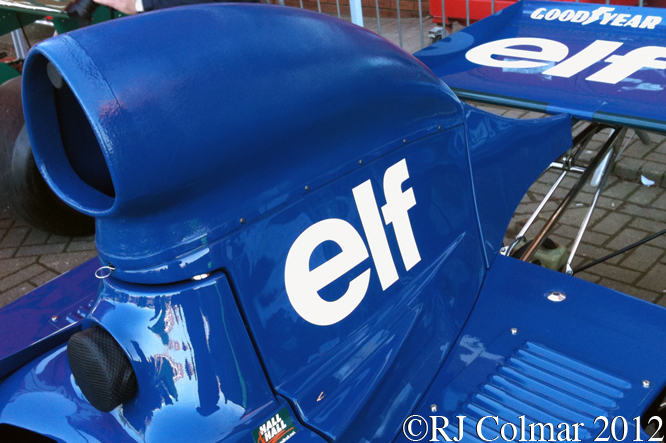
Airboxes went through many interesting stages of development in the 1972 and 1973 seasons, the Tyrrell 005/006 airbox seen here was a second development the first having resembled the airboxes seen on the earlier Tyrrell 002 and 004 cars, Derek Gardner is quoted as having been influenced by the design of the central engine intake of the Hawker Siddley Trident having gained access to Hawker Siddeleys Test and Development research on the shape of the inlet. The top piece of the trident airbox as seen here and in period has a buff appearance because it appears to have been made inside out with the rough side of the fibre glass on the outside of moulding rather than on the inside as one might normally expect.
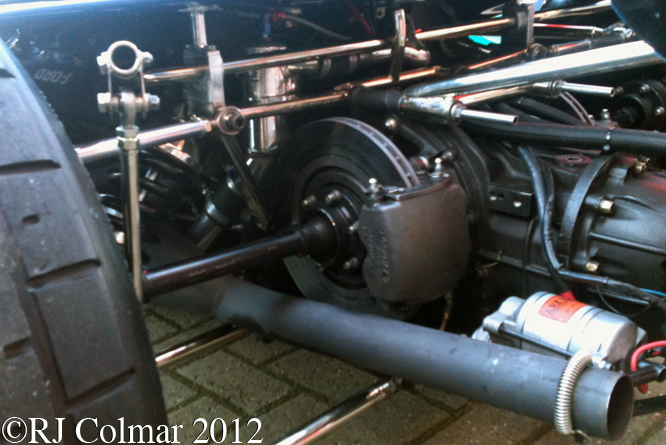
At the British Grand Prix #006/2 used by Stewart and #006 for Cevert both appeared with older tear drop shape rear wing end plates, but sans the aerodynamic appendage hitherto mounted to the back of the airbox and sans bodywork covering the Ford DFV cam covers and rear suspension. Despite qualifying 4th and 7th Stewart and Cevert could only finish the British Grand Prix 10th one down and 5th respectively.
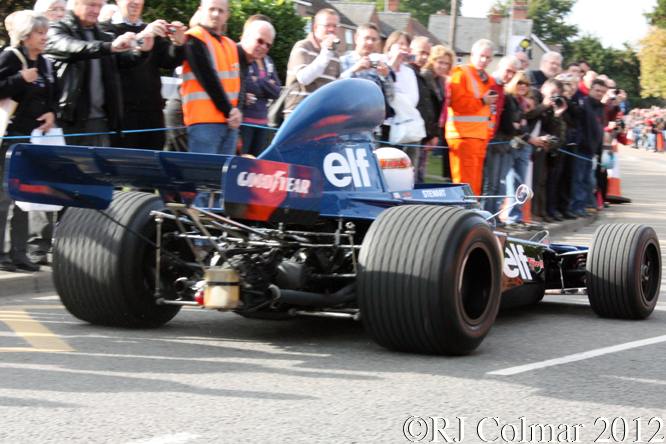
Next up came two one two finishes in the Dutch and German Grand Prix with Cevert in #006 behind Stewart in #006/2, at the Austrian Grand Prix Stewart finished second and clinched the World Championship with a 4th place finish ahead of Cevert at the 1973 Italian Grand Prix after a tremendous recovery from a puncture.
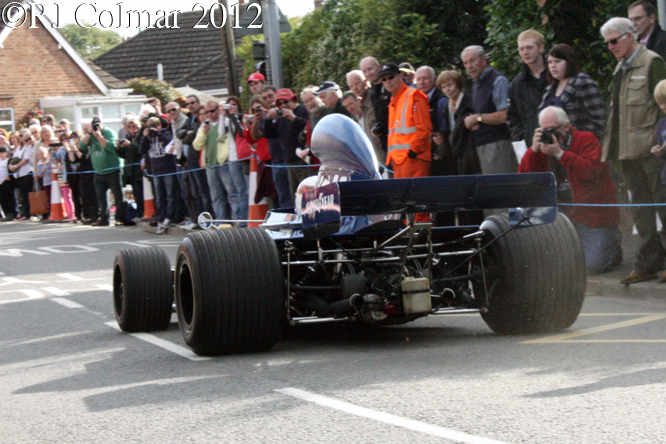
#006 with Francois at the wheel was damaged in a collision with Jody Scheckter on 36th lap of the 1973 Canadian Grand Prix and parts of #006 were salvaged to build up #006/3 in time for the following US Grand Prix. Francois was killed in the new car during practice for that race and the Tyrrell team withdrew from what should have been Stewart’s swan song and last Grand Prix before retirement.
The current owner had #006 restored by Hall and Hall to 1973 Spanish to French Grand Prix spec, from 17 Grand Prix starts, along with winning the 1973 South African Grand Prix in the hands of Stewart, #006 was driven to seven 2nd place finishes by Francois Cevert in the 1972 and 1973 seasons.
Sadly first Gerry Birrell and then Roger Williamson, who were successively chosen to have replace Jackie Stewart, died during the 1973 season and eventually Jackie and Francois were replaced by Jody Scheckter and Patrick Depailler.
1973 was the last year in which a variety of numbering methods were used for Grand Prix cars, the Tyrrells ran with the #6 and #8 in Argentina, the #3 and #4 from Brazil through to Spain and then for no obvious reason the #5 and #6 for the remainder of the season.
My thanks to all those who contributed to the Airboxes the Good the Bad and the Ugly along with the Tyrrell 006 threads including Tim Murray who highlighted the absence of any logic to the Formula One numbering system at The Nostalgia Forum.
Thanks for joining me on this Championship Foundation edition of “Gettin’ a li’l psycho on tyres” I hope you will join me again tomorrow. Don’t forget to come back now.


